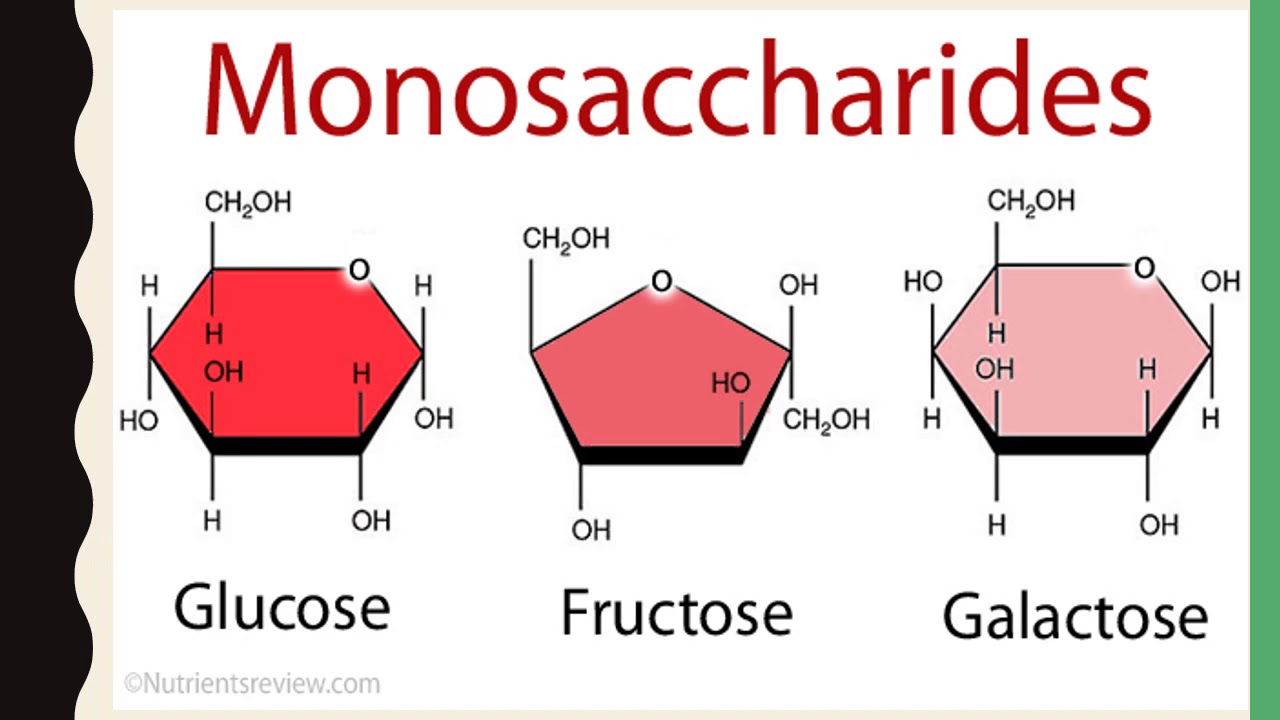Is Galactose a Monosaccharide? An In-depth Analysis.

Strong 8k brings an ultra-HD IPTV experience to your living room and your pocket.
The term "sugar" comes with candy, cakes, and soda, but sugars are also important components of our biology, playing crucial roles in our metabolism and in the functioning of our cells. One such sugar is galactose. It's always talked about when carbohydrates and sugars come up. With this article, we will get into the question: Is Galactose a Monosaccharide? We will look at what makes this molecule so special, from a structural point of view to its many functions and its classification as a sugar.
What is Galactose?
But before we can decide whether or not galactose is a monosaccharide, let's first define what galactose is. Galactose is a kind of sugar that may appear naturally in many foods. In fact, it can come from dairy. Indeed, galactose is a simple sugar, but more precisely, it is a member of a category of sugars known as "monosaccharides." Monosaccharides are those sugars at the most fundamental level, which may not be hydrolyzed into any simpler sugars.
More complex carbohydrates, such as disaccharides and polysaccharides, are composed of these monosaccharides. Of the simple sugars, though glucose, fructose, and galactose all have the same chemical formulas, each molecule is different based on structure. In other words, galactose has the same chemical formula as glucose, C₆H₁₂O₆, but the arrangement of the atoms in the molecules is what distinguishes it and gives it specific properties.
Is galactose a monosaccharide?
One simple answer to the question "Is Galactose a Monosaccharide?" is that yes, galactose, a monosaccharide, is a fact because the galactose is a single unit of sugar and cannot be broken down into simpler sugars. That's why it falls under the category of monosaccharide because it contains only one sugar molecule, making this one of the simplest carbohydrates.
To understand why galactose is a monosaccharide, one needs to consider the meaning of a monosaccharide. A monosaccharide is defined as the most simplified unit of carbohydrates and consists only of one sugar molecule. These sugar molecules are therefore made up of carbon (C), hydrogen (H), and oxygen (O) atoms in the ratio 1:2:1, respectively.
Monosaccharides can also be divided into groups based on the number of carbon atoms present. Galactose is a six-carbon sugar like glucose, and it is called a hexose. It is also an aldose—there is an aldehyde group (-CHO) at one end of the molecule.
Structure and Properties of Galactose
To explain why galactose is an important monosaccharide, its structure must first be discussed. Galactose is a six-carbon sugar that has two structures. Its two structures are linear and ring. Most galactose exists in an aqueous solution as its ring form, which is also the most common form found in living organisms.
In its straight-chain configuration, galactose contains the aldehyde group at one end of the chain. In its ring configuration, the aldehyde group undergoes condensation with one of the hydroxyl groups (-OH) in the molecule to form a stable cyclic structure. This is characteristic of many monosaccharides.
While galactose, glucose, and fructose all have the same molecular formula C₆H₁₂O₆, they differ. The difference between galactose and other sugars is the arrangement of their atoms. Differences in structure cause unique properties and roles for galactose in biological activities.
Biological Roles of Galactose
Now that we have established galactose is a monosaccharide, let's talk about its role in biology. Galactose plays a critical role in several biological processes by acting as a precursor in the synthesis of many important biomolecules, such as glycoproteins and glycolipids. Such molecules are necessary for cells and tissues to function, particularly in the nervous system.
It is mostly obtained by galactose in the human body from lactose, the sugar found in milk. When a dairy product is consumed, the enzymes in our digestive system break it down into glucose and galactose. And then the liver converts that galactose into glucose to be used as an energy source by the body.
Other than this, galactose has another notable function in the biosynthesis of galactolipids, components of the cell membranes in the brain. This is trying to preserve the integrity and functions of nerve cells. Galactose also plays a role in the production of glycosylated proteins. Such proteins play roles in cell-to-cell communication, immunity, and healing or repair of tissues.
Galactose and Health
While galactose is a monosaccharide and a byproduct of normal body function, its high levels are somewhat toxic. A congenital disorder named galactosemia impairs the process by which a body uses galactose for its energy use. The enzyme that catalyzes galactose metabolism into glucose is deficient or absent in individuals with galactosemia; thus, galactose becomes toxic and accumulates within the blood, causing a range of complications, including liver disease, cataracts, and developmental delays.
Individuals with galactosemia are encouraged to avoid the ingestion of all foods that contain galactose, such as dairy. Early and appropriate treatment will be very useful in helping patients live normal lives without complications.
Conclusion
So, is galactose a monosaccharide? Absolutely. Galactose is a simple sugar with a unique molecular structure that classifies it as a monosaccharide. It plays an important role in the human body, contributing to the synthesis of vital molecules and acting as an energy source. However, like all sugars, it must be carefully regulated to avoid health complications.
To summarize, galactose is a monosaccharide—or simple sugar—a possible part of several important biological functions, especially in the human brain and cellular processes. Understanding its role inside our body helps us appreciate the importance of carbohydrates in our overall health.
Note: IndiBlogHub features both user-submitted and editorial content. We do not verify third-party contributions. Read our Disclaimer and Privacy Policyfor details.





